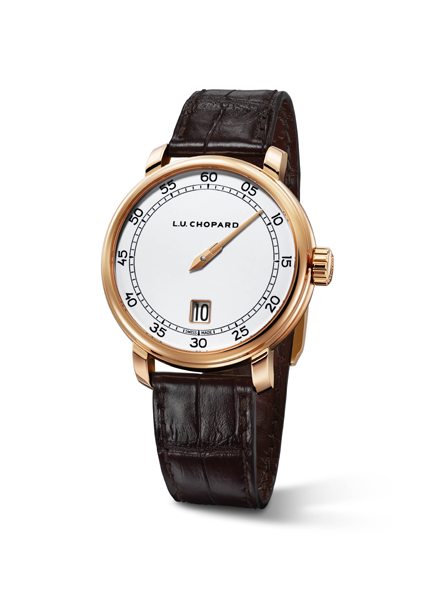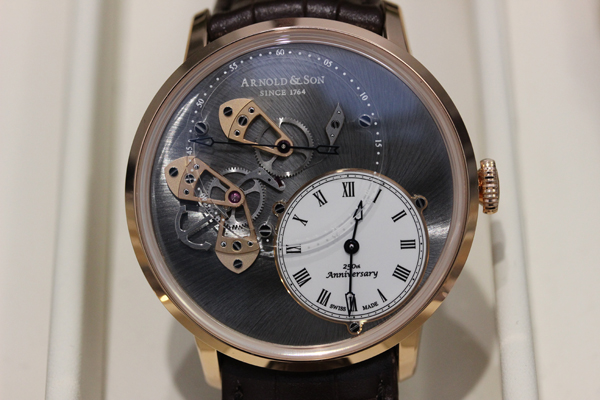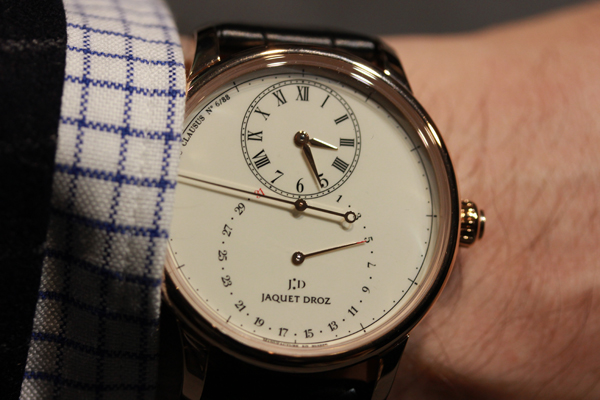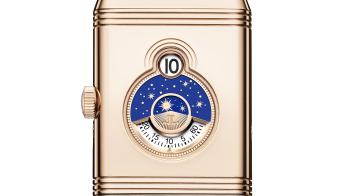During the past few weeks, the introduction of a pair of timepieces has shone a light on a very peculiar watchmaking kink : jumping hours. The Chopard L.U.C Quattro Spirit and the Reverso Tribute Nonantième are giving a renewed boost to digital time display, of the kind that doesn't budge for nearly an hour.

Jumping hours are printed on a disc that leaps all of a sudden after having stayed put for 59 minutes and 59 seconds... that is, 55 minutes really for the Reverso as it slighly slides over the course of 5 minutes, making it a semi-jumping hour. As for the L.U.C, it brings its own brand of special with an 8-day power reserve, quite the feat in this field, and a display window located at 6 o'clock rather than the commonplace twelve.

It's worth noticing that the most common jumping indication is really the date. But it's become so obvious that it mostly goes unnoticed. So if you want to get real, you need to look at something more complex altogether, and that's what jumping hours are. Their popularity ebbs and flows but they keep coming back tirelessly. The renewed interest of 2021 isn't the first one, and it won't be the last.
So hours are not the only ones to jump. In fact, just any indication can be made to leap rather than sweep. For those who go that way, the gain is potentially huge, especially if they push the envelope. Just consider the aura of the A. Lange & Söhne Zeitwerk. It displays hours AND minutes (and now the date) on jumping discs. Its importance is directly proportional to the complexity of making this timepiece, which has become litterally peerless (its equivalents with Journe and Dewitt are no longer made).

The third type of jumping indication is another kettle of fish. Dead-beat seconds, aka true seconds, replace the typical sweeping of the trotteuse by a clean jump from one second to the next. In fact, said sweeping is really made of a large number of small jumps, proportional to the movement's frequency. A 4 Hz calibre creates 8 jumps per second for the central hand, which ends up feeling like a fuid motion.

In order to jump every second and no more, the hand must be held, and released 60 times per minute by some sort of escapement. Arnold & Son's DSTB and Jaquet Droz's Grande Seconde Deadbeat have been doing just that for years. More recently, Ferdinand Berthoud has implemented it in the Chronomètre FB2RE, thanks to a device called the Reuleux triangle.


Let's not forget the big retrograde family, halfway between the sweep and the jump. During the whole length of their cycle (day, date, month, week and so on and so forth), they move forward at their own pace. When they reach the end, they're propelled backwards in a flash to their starting position, and resume their course. That's the way the Octo Finissimo Perpetual Calendar displays the date.

Behind the scenes, where the magic of these beautiful and enjoyable complications happens, leaping is a complex technical matter. And it's always about energy. Jumping requires gaining momentum and then coming to a halt. It starts at the right moment and stops as soon as the next position has been reached. No wiggling, no wobbling, it has to be just right.
The idea is to wind a spiral- or straight-spring to gather force, to do it gradually so as not to deprive the rest of the movement of its energy (isn't that right, escapement ?), to release it and then, to use another spring (a jumper-spring) as a break. Just like with track and field, jumping is all about elasticity, timing, and making the show. And it's a greedy little beast.









